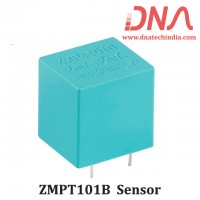Data Logger & Controller |
||||||
|
|
||||||
Overwier: |
||||||
|
A data logger (also datalogger or data recorder) is an electronic device that records data over time or in relation to location either with a built in instrument or sensor or via external instruments and sensors. Increasingly, but not entirely, they are based on a digital processor (or computer). They generally are small, battery powered, portable, and equipped with a microprocessor, internal memory for data storage, and sensors. Some data loggers interface with a personal computer and utilize software to activate the data logger and view and analyze the collected data, while others have a local interface device (keypad, LCD) and can be used as a stand-alone device. |
||||||
|
Data loggers vary between general purpose types for a range of measurement applications to very specific devices for measuring in one environment or application type only. It is common for general purpose types to be programmable; however, many remain as static machines with only a limited number or no changeable parameters. Electronic dataloggers have replaced chart recorders in many applications. |
||||||
|
One of the primary benefits of using data loggers is the ability to automatically collect data on a 24-hour basis. Upon activation, data loggers are typically deployed and left unattended to measure and record information for the duration of the monitoring period. This allows for a comprehensive, accurate picture of the environmental conditions being monitored, such as air temperature and relative humidity. |
||||||
|
In control theory, a controller is a device which monitors and affects the operational conditions of a given dynamical system.The operational conditions are typically referred to as output variables of the system which can be affected by adjusting certain input variables. For example, the heating system of a house can be equipped with a thermostat (controller) for sensing air temperature (output variable) which can turn on or off a furnace or heater when the air temperature becomes too low or too high. |
||||||
|
|
||||||
Block Diagram: |
||||||
|
||||||
|
|
||||||
Explaination: |
||||||
Microcontroller |
||||||
|
It is the Heart of the circuit. We will be using ATMEL’s AT89S52 microcontroller. It is a 40 pin microcontroller with 256 bytes RAM & 8kb flash memory. It has TWO internal timers namely TIMER 0 & TIMER 1 and one UART for serial communication. The controller gets the current temperature from the ADC & compares it with the SET temperature & accordingly TURNS ON/OFF the Relay. It also get Relative humidity from SYHS220 or SYHS230 humidity sensor and accordingly Turns ON/OFF the dryer. It also communicates with the PC through MAX 232 using RS 232 Protocol. |
||||||
|
|
||||||
Temperature Sensor |
||||||
|
We are using LM 35 as temperature sensor. LM 35 is a precision temperature sensor whose output is linearly proportional to Celsius Temperature. The LM35 is rated to operate from -55° Centigrade to 150° Centigrade with a linear scale factor of +10mv/° C. |
||||||
|
|
||||||
|
Humidity Sensor |
||||||
|
We will use SYHS220 or SYHS230 humidity sensor. These modules convert relative Humidity into corresponding voltage levels. |
||||||
|
|
||||||
ADC |
||||||
|
The output of the temperature sensor and humidity sensor is an analog signal & cannot be directly given to the microcontroller. We need to convert this analog signal into digital so we will be using MCP3208 which is a successive approximation 12-bit ADC. The controller communicates with this device using SPI Protocol. |
||||||
|
|
||||||
MAX 232 |
||||||
|
Microcontroller communicates with the PC using its inbuilt Serial Port. The voltage levels are 0 & 5 Volts, but for the controller to communicate with the PC we are using RS232 protocol so for converting the CMOS (0-5) voltage levels into RS232 (±12) voltage levels we will be using MAX 232. |
||||||
|
|
||||||
PC |
||||||
|
The PC is used to display the Set/Current Temperature, Humidity as well as edit the set temperature and humidity. VB based software is used to display & edit the information. |
||||||
|
|
||||||
Relay |
||||||
|
Relays are components which are basically used to turn ON/OFF high current or Voltages devices. A relay is TURNED ON when a sufficient holding current is passed through its coil. We are using 12v SPDT relay i.e. the voltage required to energize the coil is 12v and of Single Pole Double Throw (SPDT) type i.e. it consists of one common Pole & two outputs namely the Normally Open (NO) & Normally Closed (NC) outputs. |
||||||
|
|
||||||
Relay Driver |
||||||
|
The Relays require suitable ‘PULL IN’ current or ‘HOLDING’ current (around 70ma) to turn it ON. Moreover the Relay coil voltage (12volts) is more that what the controller can handle. So to provide the necessary current & at the required voltage a relay driver circuit is required. |
||||||
|
|
||||||
Power Supply |
||||||
|
We require regulated 5 volts for microcontroller, ADC, Temperature Sensor, MAX 232 & approximately 12 volts for the Relay. These voltages are generated from 230v line voltage. |
||||||
|
|
||||||
Application |
||||||
|
1. Unattended weather station recording 2. Offshore buoys for recording a variety of environmental conditions. 3. Measure temperatures (humidity, etc) of perishables during shipments 4. Process monitoring for maintenance and troubleshooting applications. 5. Process monitoring to verify warranty conditions 6. Environmental monitoring. 7. Vehicle Testing (including crash testing) 8. Motor Racing 9. Temperature, Humidity and Power |
||||||
|
|
||||||
Advantages |
||||||
|
1. System is complete automatic and works without any human intervention. 2. Since database is stored directly in PC number of records that can be maintained in almost infinite. 3. Less Time Consuming 4. No human resource 5. Can work 24x7 |
||||||
|
|
||||||
Disadvantages |
||||||
|
1. Since database is stored directly in PC the PC should be on all the time. 2. Since LM35 is used it can be used to measure only upto 125°C. |
||||||
|
|
||||||
Software Used |
||||||
|
1. Assembly Language for the Microcontroller coding. 2. Keil Compiler 3. Micro Flash Programmer for loading the code into the controller |
||||||
|
|




